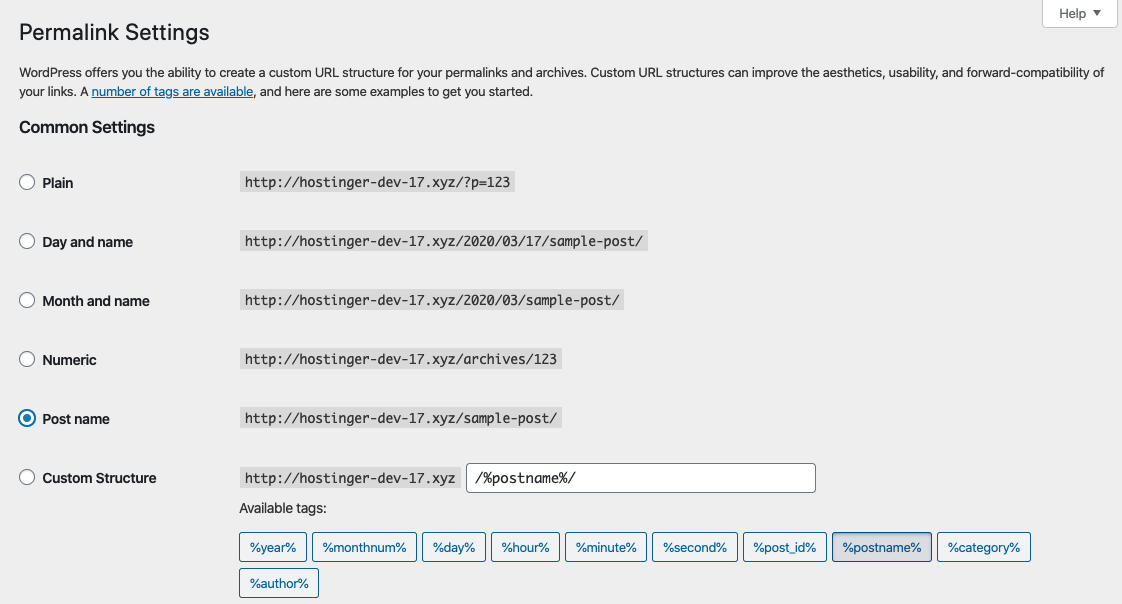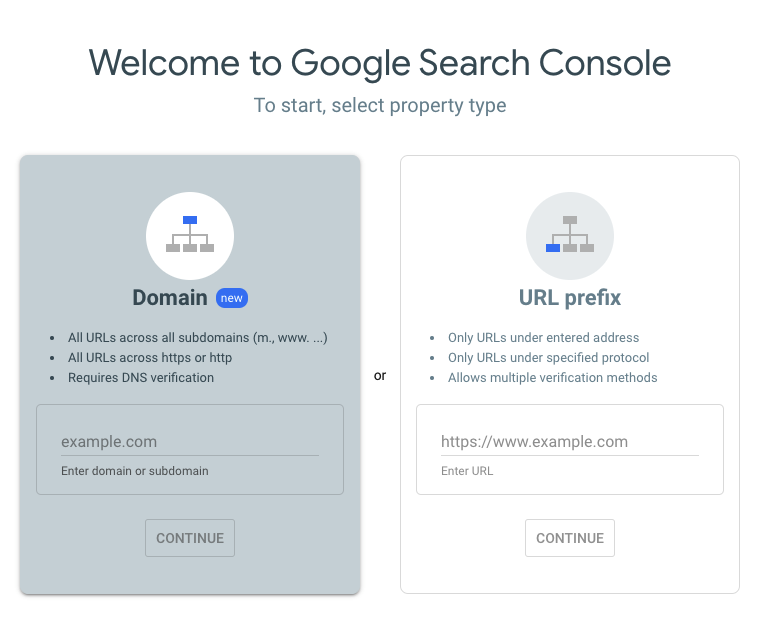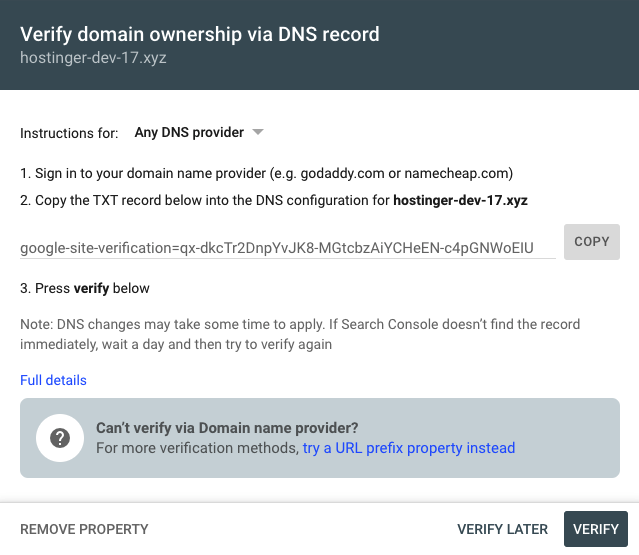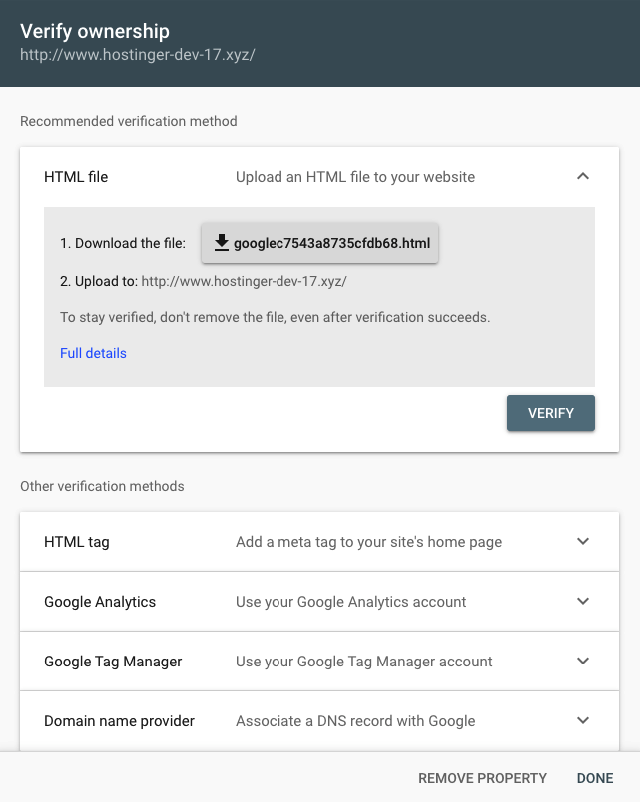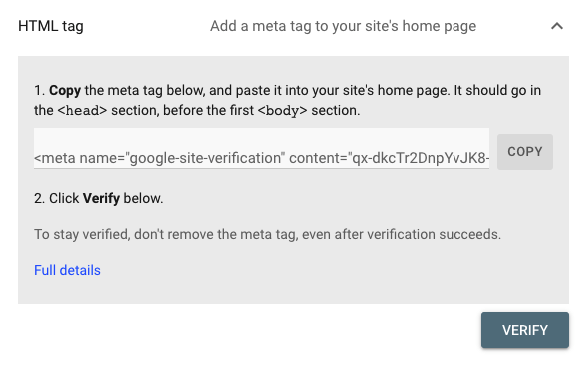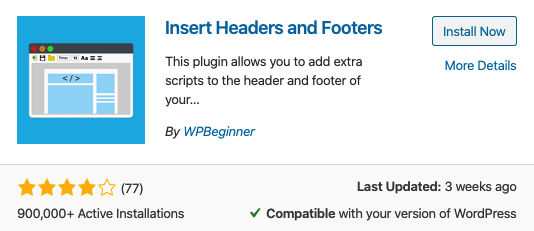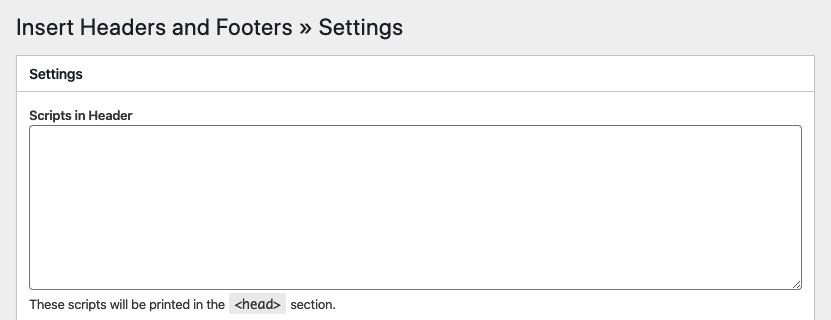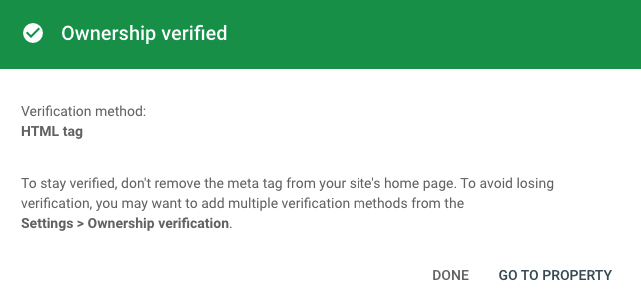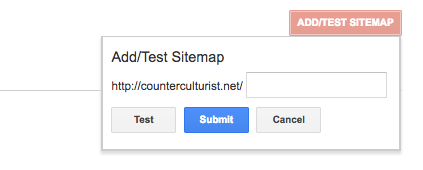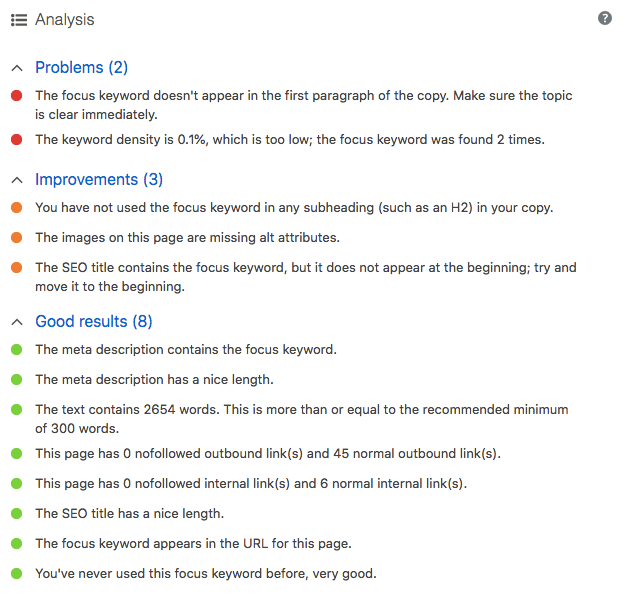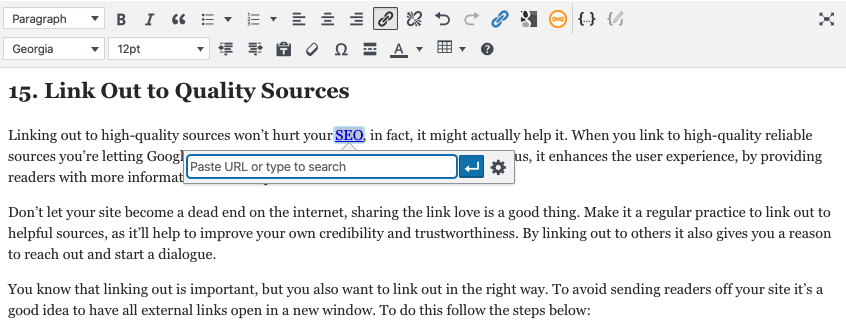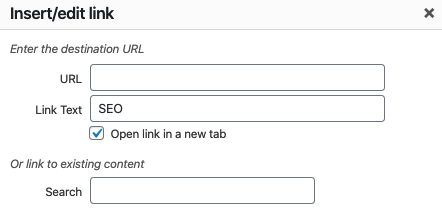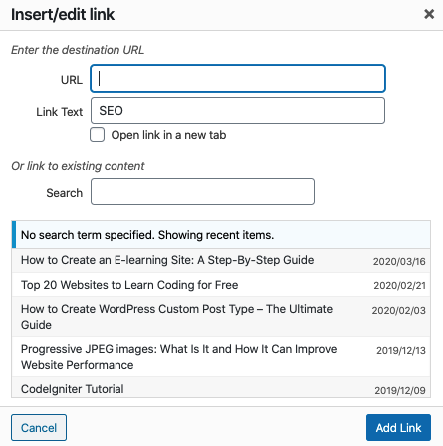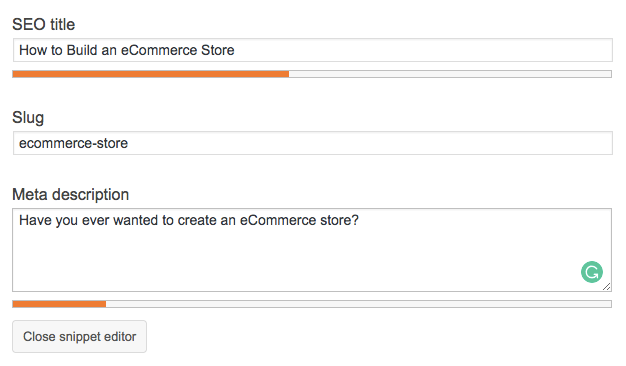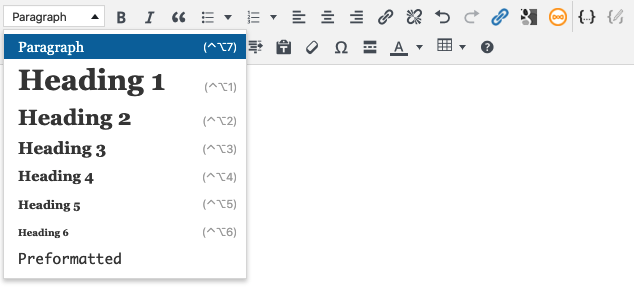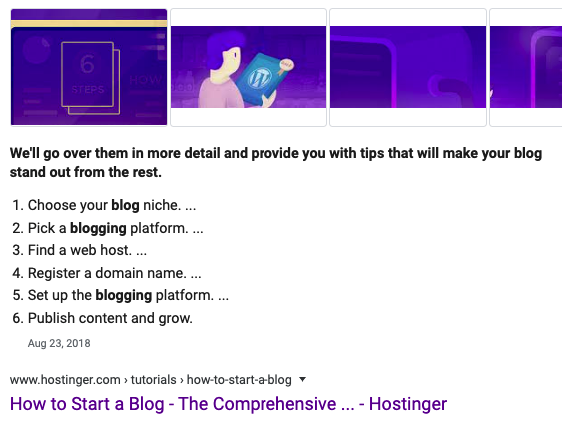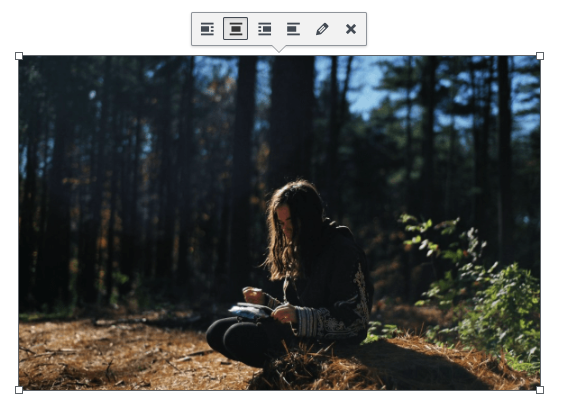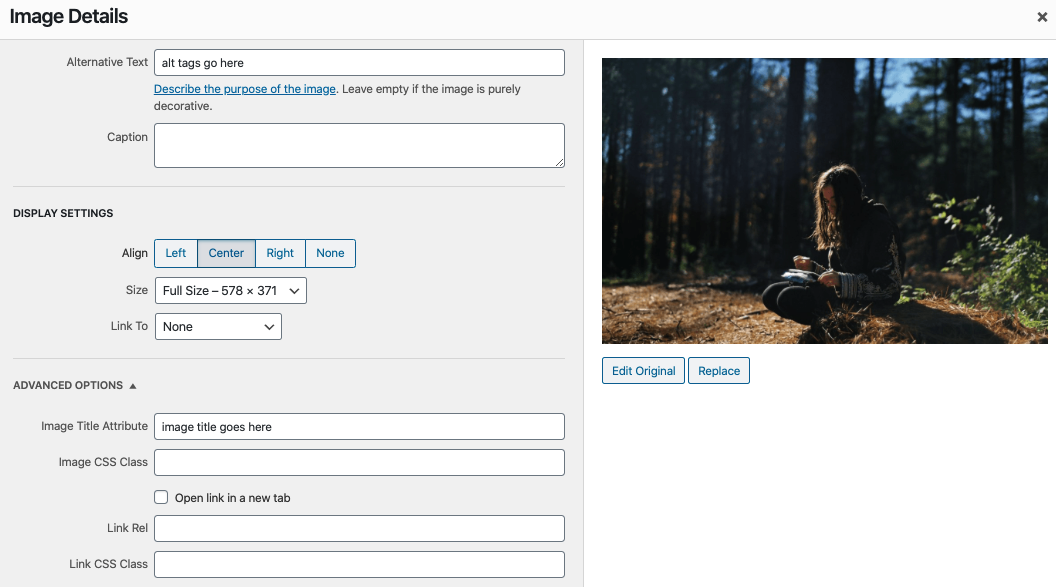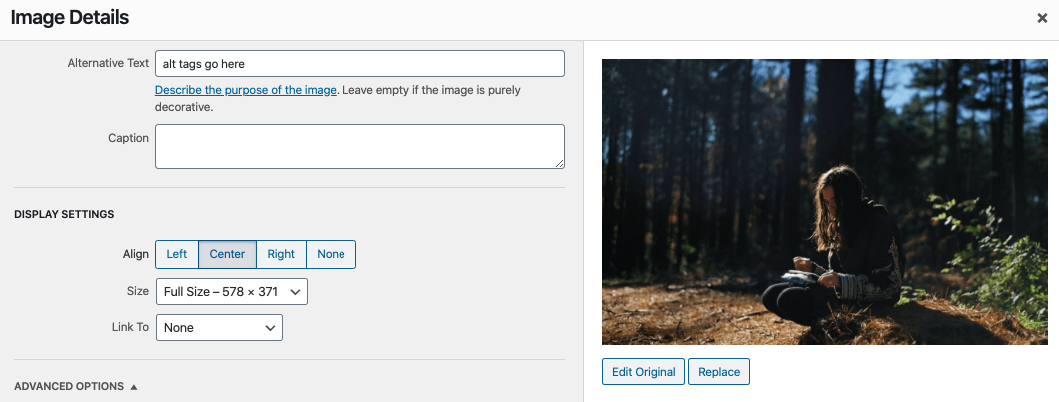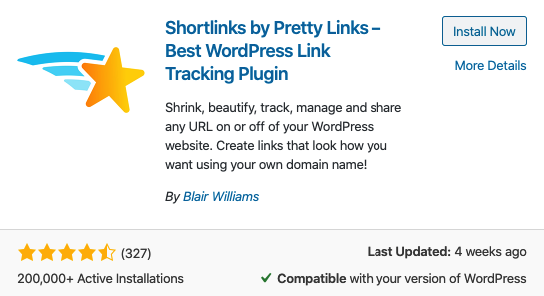If you want a good rank in search engine result pages, then you need to take SEO seriously. Luckily, using WordPress, your already a step ahead, as it’s SEO friendly right out of the box. It’s also one of the many reasons why people choose WordPress in the first place.
Still, there are several things you can do to take WordPress SEO to the next level. To make it easy for you, we’ve created this guide. Below you’ll learn 30 of the best tips you can use to improve your website’s traffic.
1. Install a WordPress SEO Plugin
WordPress already has some excellent built-in SEO features. But, you can take your search engine optimization to the next level by using an SEO plugin. The best SEO plugin on the market is Yoast SEO; in fact, it’s what we use here at Hostinger.
With this plugin, you can perfectly optimize each page and post for your chosen keyword(s). It also includes an analysis based on the latest algorithm updates. You can even generate an XML sitemap and add schema markup to your website.
To set up SEO with Yoast, navigate to your WordPress dashboard, and select Plugins -> Add New. In the search bar type in Yoast SEO and click Install Now.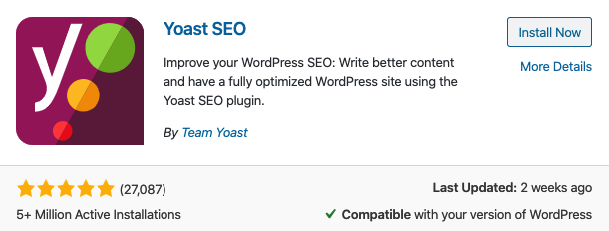
Finally, click Activate. The SEO by Yoast plugin is now running on your site, and you can access it by clicking on the Yoast SEO icon on the left-hand menu.
2. Do Keyword Research
Choosing to conduct keyword research will make or break your WordPress SEO strategy. Doing keyword research will allow you to:
- Create content your visitors are actually searching for.
- Develop a better understanding of what your market needs.
- Track the success of everything you write.
- Generate valuable traffic for your site.
There are a variety of tools that will help you with keyword research. Some of the top tools include KWFinder, SEMRush, and even Google Keyword Planner.
Although multiple posts could be written on keyword research alone, the basics of it are as follows:
- Create a list of target keywords related to your topic.
- Input them into a keyword research tool to find keywords that receive a decent volume of traffic, and have lower competition.
- Research competitors by running similar sites through keyword research tools. Then see which keywords bring them the most traffic.
- See which of these keywords have a low enough competition where you can compete.
For more information on keyword research, spend some time reading through these posts:
With your keyword list created, it’s time to start creating content and optimizing it with the tips on this list.
3. Turn On Search Engine Visibility
There’s a built-in option within WordPress that will hide your site from the search engines.
You might find this option useful when first building your website, but it can make ranking near impossible. If you’ve been employing some of the tips on this list, but aren’t seeing your rankings improve, this could be the issue.
To see if this setting is on, navigate to Settings -> Reading from within the WordPress dashboard. Scroll down, and you’ll see a section called Search Engine Visibility.
Make sure that you leave this box unchecked. Then click Save Changes.
4. Adjust Permalink Structure
When you first install WordPress, your site’s posts and pages will have a strange default WordPress URL structure. This default structure isn’t good for your SEO.
The most search engine friendly URL permalink structure is the Post name setting. By switching to this setting, you’ll be able to include your blog post or page title and even a keyword in your URL. To change this setting, navigate to Settings -> Permalinks.
Under the Common Settings section, select the option that says Post name.
If you’re making this change late in the game, you may need to redirect any old URLs. You can do this with a plugin like Change Permalink Helper. Simply input your old URLs, and they’ll forward to your updated URLs.
5. Add Your Site to Google Search Console
Using Google Search Console will show you how your website is currently performing in the search engines, and alert you to any sitewide errors that may be affecting your search results ranking.
To add your site, get started on Google Search Console and enter your Domain or URL prefix. Next, click continue.
If you enter your domain or subdomain, you will need to verify it on your web hosting provider. Simply follow the instructions listed and click verify.
If you enter your URL Prefix, you will also see different options available for you to verify your site.
One of the easiest verification methods is the HTML tag. Let’s take a look at how to use this method.
Copy the meta tag code, then navigate to your WordPress dashboard. To add this code to our header, we’re going to utilize a WordPress plugin. Navigate to Plugins -> Add New, then search for Insert Headers and Footers.
Install and activate the plugin shown in the picture above. Next, open up the plugin by going to Settings -> Insert Headers and Footers.
Now paste the code into the box that’s labelled Scripts in Header, and click Save. Finally, navigate back to Google Search Console and click the Verify button. A verification should look like the one below.
6. Integrate Google Analytics
Another Google tool you’ll want to have in your arsenal is Google Analytics. This tool will show you how well your WordPress SEO strategy is working by giving you an in-depth breakdown of your site’s traffic.
To set up your account, navigate to the Google Analytics homepage, and create an account. Next, you’ll want to locate your tracking code. It should be under Tracking Info -> Tracking Code. Then, copy the code that looks similar to the example below:
Depending on your theme you might have an option to directly add the Google Analytics tracking code. If it’s not possible, then you can use the same Insert Headers and Footers plugin we used above.
Open up the plugin, navigate to the header section, and paste in your tracking code. That’s it! Now you can view your site’s statistics. For more detailed instructions, you may also check our step-by-step guide on how to add Google Analytics to WordPress.
7. Submit a Sitemap to Google
Sitemaps are used by search engines to crawl your website better. Though search engines will still crawl your site without a sitemap, creating one allows you to report the data that you want the search engines to crawl.
The best way to ensure certain pages that don’t contribute to your rankings aren’t crawled, as well as give precedence to your more valuable pages. If you’re using the Yoast SEO plugin, then you can easily create and submit a sitemap.
Navigate to SEO -> General -> Features. Then scroll down and enable XML Sitemaps.

Click the link that says See XML sitemap and this will open your sitemap to ensure it’s actually created.
Now we’ll submit that sitemap to Google. Go to your Google Search Console dashboard and click Sitemaps.
In the right-hand corner, you’ll see an option to Add/Test Sitemap. Click that selection, insert the URL of your sitemap, and click Submit. Now Google will crawl your sitemap regularly, which can help for speedy post indexing.
8. Optimize Your Site for Mobile
Google is testing its mobile-first index. This means that they’ll use the performance and functionality of your mobile pages to determine your rankings. So, if you aren’t utilizing a responsive theme, this is the best time to fix it.
But, beyond choosing a responsive theme, you can check to see how your website currently performs across the mobile spectrum. To do this, open up Google’s mobile-friendliness test, and enter your site’s URL.
This will give you a breakdown of how the mobile version of your site performs, show you a screenshot, and offer some tips on how to improve it.
9. Speed Up Your Website
Website speed has always been important. Having a slow-loading website will negatively impact your rankings and user experience. Page speed is also a ranking factor, so make sure it is up to speed.
Luckily, fixing a slow loading site isn’t hard to do. The steps below will help you get started:
Get a Baseline Number
First, you’ll need to get an idea of how your site is actually performing. Open up a tool called GTMetrix and run your WordPress website through the tool. This will give you a breakdown of your current performance numbers, so you can see what you need to improve.
Upgrade Your Host
Sometimes, misconfiguration from the server-side can cause slowness. This is why choosing the correct web hosting environment is important. For the WordPress site performance, we recommend going with a WordPress-specific hosting package that’s custom-tailored to your site’s setup.
Utilize a CDN
A CDN will help speed up your site by storing versions of your site on servers across the globe. That way, when a visitor lands on your site, they’ll get the version that’s closest to their physical location. For a reliable free solution, you can integrate your site with a CDN like Cloudflare.
Use a Caching Plugin
A caching plugin will generate static HTML files, instead of the PHP files normally required to run WordPress. This will minimize the number of requests between the server and your user’s browser, which will decrease your loading speeds.
Some of the most common WordPress caching plugins include W3 Total Cache and WP Super Cache.
Optimize Your Media
If you’re uploading images to your site, then these need to be correctly optimized.
To optimize your images, do the following:
- Reduce the file size by running your images through a tool like TinyPNG.
- Resize your images before upload.
- Install an image optimization plugin like WP Smush.
10. Fix Any Broken Links
Having a lot of broken links isn’t good for your readers or your rankings. Also, they make it harder for Google bots to crawl your WordPress site.
The easiest way to check your website for broken links is to open up Google Search Console and click on Links.
Google Search Console will show you where the broken link is, so you can take a look and fix it.
11. Have an SEO Focus Keyword For Every Post
Even though the way we optimize for keywords has changed, they still play an important role in SEO. Whenever you’re writing a post on your site, you should have a focus keyword for that specific post.
Here are some of the best practices when optimizing for a chosen keyword:
- Don’t overstuff the keyword into your post, only include it when it’s natural.
- Include your keyword in the first paragraph of your copy, if possible.
- Use your target keyword in your title and your subheadings.
- Add your target keyword to your URL, and meta description.
Yoast SEO plugin makes implementing the above tips easy.
Whenever you’re writing a post, input your target keyword into the tool. You’ll get an analysis of how well-optimized that post is for your chosen keyword.
You’ll be given tips to improve your keyword optimization and increase your chances of ranking in the search engines.
12. Create High-Quality Content
Google loves high-quality content. Take a look at the top 10 results for any given keyword, and you’ll find the content satisfies two requirements:
- The content is generally longer and has high content standards.
- The content satisfies the search intent.
Long, well-written content is great for your WordPress SEO. But, you might not know what search intent is. At the core, search intent is the intention behind the keyword phrase.
When you’re creating any kind of content, you should research what’s currently ranking and try to understand why it’s ranking. Sometimes, the content will be ranking from the strength of the domain alone. But, if every website has a similar amount of authority, then the content itself will be the differentiating factor.
To have a better perspective of the keyword and what searchers are looking for, ask yourself the following questions:
- Is the searcher looking for information or product content?
- Are they looking for something in-depth? Or a short read?
- Why are the current pages ranking?
- What style of content will best answer the keyword?
With a better understanding of the keyword, the pages that rank well, and what the searcher wants, you’ll be ready to create a piece of epic content.
13. Create Longer Content
Longer content tends to rank better in search engines. Studies found that longer content gets more social shares and backlinks overall, which means higher rankings.
Another study has found that most of the content that’s ranking on the first page of Google is over 2000 words. This doesn’t mean every post on your site has to reach this content length, but it should be something you shoot for.
Still, remember not to stuff your content with unnecessary words to hit your word count goals.
Instead, you should focus on the intent of the keyword. Meaning, what’s the reason the user is searching for that keyword in the first place. Then, answer the goal of that keyword in the most thorough and useful manner possible, which in some cases might mean writing fewer words.
14. Create Evergreen Content
Evergreen content can be a powerful driver of organic traffic. This style of content will always be relevant as it doesn’t rely on timely information.
Think of a post like, The Ultimate Guide to Onsite SEO, versus something like What You Need to Know About Google’s Latest Update.
The first will be relevant for a long time, while the second will rely upon time-based information. This doesn’t mean you publish your evergreen content once and forget about it forever. But instead, you regularly update the content to reflect the latest and most relevant aspects of your industry or topic.
Evergreen content is valuable in that it doesn’t lose its relevancy. This means you can continually share, promote, and pick up backlinks to this content. This style of content will typically hold top-ranking positions for years.
Even though evergreen content will take more time and effort to create, the results will pay off for years to come.
15. Link Out to Quality Sources
Linking out to high-quality sources won’t hurt your search engine optimization; in fact, it might help it. When you link to high-quality reliable sources, you’re letting Google know that the linked content is similar to yours. Plus, it enhances the user experience by providing readers with more information on the topic.
Don’t let your website become a dead end on the internet, sharing the link love is a good thing. Make it a regular practice to link out to helpful sources, as it’ll help to improve your own credibility and trustworthiness. By linking out to others, also gives you a reason to reach out and start a dialogue.
You know that linking out is important, but you also want to link out in the right way. To avoid sending readers away from your site it’s a good idea to have all external links open in a new window. To do this follow the steps below:
Create a Hyperlink
To create a hyperlink, highlight the text you wish to link, and click on the hyperlink button:
Then, click the gear icon, which will bring up your link options.
Change Link Options
A text box will appear and simply check the box that says Open link in a new tab.
Now, whenever a user clicks on the link, it’ll open up in a new tab, instead of being redirected off your website.
16. Internal Link Content Together
Whenever you have the chance, you should be linking to older content you’ve published. Regular internal links can bring you benefits like:
- Making it easier for Google bots to crawl your website and access other posts and pages.
- Helping Google understand the context of your page’s content by using related hyperlink text.
- Keeping visitors on your site longer by visiting more pages, thus reducing bounce rate, improving time on the website.
WordPress makes it easy to interlink your content together.
Whenever you’re writing a post, simply highlight a portion of the text and click the hyperlink button. Then, select the gear icon, bringing up your link options. This is very similar to linking to an external source.
In the pop-up window, you’ll see a list of previous posts you’ve written. Select the most relevant post or page from the list, and your internal links are complete.
17. Optimize Your Post and Page Titles
Your title tag is your most important heading tag. It tells Google what your page is about, and will influence whether readers will click through to your website. If you’re not sure which tag is your title tag, it’s the name of your post or page.
Follow these best practices for optimizing your title tag:
- Include your target keyword as early in the title as possible.
- Create a title tag between 60 to 70 characters.
- Create an enticing title that gets people to click.
Changing your title tag to something well-optimized and clickable is quite easy, especially if you’re using the Yoast SEO plugin.
To change your title tag, open up one of your posts, and scroll to the bottom. You’ll see a section called Snippet editor.
Here, you’ll be able to adjust your WordPress SEO title, slug, and meta descriptions. Make sure there are no red or orange colours, only green, and optimize it to rank better.
18. Optimize Your Header Tags
Your header tags will give the crawler bots an idea of what your content is about. Using these tags throughout your content will make it more readable and optimized for the search engines.
In general, you should have one H1 tag per post and use a hierarchy of H2, H3, H4, etc., underneath that.
Your H1 tag will be the title of your post, so you’ll want to include your target keyword. For the rest of your header tags, use a variation of your target keyword, if possible. However, don’t stuff your heading tags with keywords if it doesn’t make sense for your blog post.
Within the WordPress editor, you can easily add header tags via the drop-down menu.
19. Use Shorter URLs
When it comes to your URLs, the shorter the better. Do your best to shorten your URLs, so they don’t show multiple categories or directories. Try to only include your target keyword, and get rid of everything else.
A long URL won’t hurt your rankings, but it can make your link look like spam, as well as lower the CTR. If you want to change your permalinks, this will help give you more control over your URL structure.
Follow these best practices when creating an SEO-friendly URL:
- Use a shorter URL whenever possible, and cut out filler words.
- Include your target keyword in your URL.
- Sensibly match your titles and URL.
- Make it readable.
- Avoid multiple categories and folders whenever possible.
With the above in mind, you can easily edit your URL from within WordPress. On the page or post you are creating, scroll to the very top, and you will find your title with the Permalink section directly below. Simply change your URL, and it will click update on the right-hand menu.
20. Optimize Meta Descriptions
Your meta description is the bit of text that’s below the title in the search results. It gives searchers an idea of what that page is going to be about.
Your meta description isn’t a direct ranking factor, but it will help improve your search engine CTR. A well-written and enticing meta description will drive the person searching to click on your post, instead of the other search results.
The data is correlation-based, but if you have a high CTR, Google will deem your page more relevant, which could improve your rankings.
To optimize your meta description implement these SEO tips:
- Include your focus keyword in your description. Google will highlight this keyword in bold, so it’ll make your listing stand out.
- Think of your meta description as an ad copy. You’re persuading your reader to click on your listing over others on the page.
21. Include Schema Markup
If you haven’t heard of schema markup before, basically, it’s additional code that helps search engines better deliver data to their searchers. By implementing schema markup, you can help your search engine listings look more attractive. This can lead to improved CTR and more traffic for your website.
Your WordPress theme might already have schema markup installed. To see if your site already has schema markup, run it through this tool. If you don’t have schema markup installed, then you can use the Schema plugin. It’s easy to configure and will automatically add schema markup to your website.
22. Optimize for Google SERP
You’ve probably seen the boxes that appear at the top of the Google search results. If not, they look like this:
This spot is technically position zero, meaning you’ll get more organic traffic and high click-throughs. However, if you’re already ranking on the first page, then getting this spot will give you two listings in the results.
There isn’t a tried and true way to get this top spot, but the following website optimizations will increase the likelihood that you get it:
- Add schema markup to your site.
- Answer the question implied in the keyword early on in your post.
- Format your answer in the form of an ordered or unordered list.
23. Optimize Images For Search Engines
Using images throughout your content will create a better quality reading experience. This will help keep your users engaged, which will give positive website performance indicators. But, beyond adding images to your site, you can optimize these to improve your SEO too.
There are three components of proper image optimization:
The Image Title Text
The image title text isn’t crawled by the search engines, but it can be a factor in your user experience. When a user hovers over your image, a pop-up will appear that has your image title text.
To change your image title text, navigate to your post editor where you’ve placed an image.
Hover over the image and click the pencil icon, which will bring up the Edit option.
Under Advanced Options, you can enter your image title.
The Alt Text
Your image’s alt text will give an indicator to Google what your page is about. Your images should use keywords that are variations of your target keyword as well as describe the image.
To change your image’s alt text, navigate to your visual editor and hover over an image you’ve added. Once again, click on the pencil icon which will bring up the Edit option. The pop-up box will bring up your image details. Look for a field called Alternative Text, and enter your focus keyword and description there.
The File Name
Your image file name can help your image rank in Google image search, which can bring your website some additional traffic.
Most default image filenames are long and confusing, plus they don’t relate to the topic of the post. Before you upload an image to WordPress, you should consider the purpose of the image, and the keyword phrase you’re targetting. Then include that keyword and other descriptive phrases in your image filename.
Also, if you’re using multiple words in your filename, make sure you’re using a hyphen between them, as Google will read these hyphens as space.
24. No-Follow Any Affiliate Links
A lot of websites use affiliate links to generate revenue. These links are used to track commission when you recommend a product, service, or course.
But, using too many of these links is frowned upon by Google. If you’re using a lot of affiliate links, then you can disguise them, while making sure they’re no-follow. You can do this by using a plugin called Pretty Links.
Pretty Links is a very useful plugin that can help you give a unique, non-affiliate looking URL to any links you’re using. As a benefit, this tool also has tracking, so you can see how many people are actually clicking your links.
To install this plugin, navigate to Plugins -> Add New and search for “Pretty Links”.
Install and activate this plugin, then navigate to Pretty Link -> Options on your left-hand sidebar.
To make sure all of your affiliate links are no-follow, make sure to check the Enable No Follow under the Default Link Options.
You can create a new link by selecting the ‘Add New Link’ option, insert your affiliate URL, and then create a custom one instead.
25. Add HTTPS to Your Site
HTTPS is also a ranking factor, so sites that make the upgrade in security will have a ranking advantage. This allows your browser to make a secure connection with any website you’re connected to and encrypts any data sent between the two.
To switch your WordPress website to HTTPS follow the steps below:
- Make sure that your current host supports HTTPS and SSL.
- Purchase an SSL certificate or obtain one through Let’s Encrypt.
- Install the SSL certificate on your host.
- Verify if SSL is working.
- Redirect all of your HTTP traffic and links to HTTPS.
If the entire process seems too technical, this tutorial will walk you through the steps.
26. Build High-Quality Backlinks
Backlinks are still one of the top-ranking factors. The more high-quality links your site has, the better its chances of ranking. According to research done by Matthew Barby, if a page has a higher number of backlinks it’ll rank higher in the search results.
Now, this isn’t a post on building backlinks, as it would be impossible to cover every strategy in detail here. However, here are a few methods that can help you generate quality backlinks to your site:
- Create skyscraper content.
- Look for broken backlinks.
- Create ego-bait content.
- Guest post on popular websites.
- Do outreach link building.
If you’re interested in exploring backlink building even further, then check out the resources below:
- Matt’s anchor text guide.
- How to Get High-Quality Backlinks in 2020.
- How to Build Backlinks When You Have A Brand New Site and No Money.
27. Do an SEO Audit
If you aren’t sure if your WordPress site is properly optimized, then you can perform an SEO audit. But, instead of going through every step yourself, you can run the website through an SEO auditing tool. These tools will run your site through a series of checks and give you a report that tells you what you’re doing right and the SEO tips you can improve upon.
SEO Site Checkup is a free tool that’ll analyze over 50 different onsite ranking factors and let you know how your site is performing. You can also use the Varvy SEO tool, which will see how well your WordPress site is aligning with Google’s guidelines.
28. Monitor Your Backlink Profile
By monitoring your backlink profile, you’ll be able to see if your offsite SEO efforts are improving. Backlinks are one of the most important ranking factors, so it’s something you’ll want to check frequently.
Seeing an upward trend in the number of sites linking to you over time is a good thing. But, remember it’s not just the quantity of backlinks that matter, but it’s the quality and relevance of these links too. The more authoritative and relevant sites that link to you, the better.
There are a ton of different webmaster tools that’ll help you monitor your backlinks. One of the most frequently used is Ahrefs. This tool will give you a detailed breakdown of the number of sites linking to you, the quality of these sites, the number of referring domains, and a lot more. It is a premium tool, but the data you’ll gain will be invaluable.
If you’re looking for a free option, then SEO Profiler might be a good fit. Simply create an account, and you’ll be able to get a detailed backlink report on a sitewide and per-page basis.
29. Force Google to Crawl Your Site
Usually, your website is crawled by how often you publish new content. But, there is a workaround that’ll get your content immediately indexed by Google.
Open up Google Search Console, navigate to Crawl, and click on Fetch as Google. Input the URL of the post you’ve just published or updated and click on FETCH.
Next, click on Request Indexing, and your new URL will be indexed by Google. Sometimes this won’t happen instantly, but it’ll be much faster than waiting for Google to crawl your website.
30. Target Long-Tail Keywords
Depending on your niche, ranking on the top page of Google for the main keywords can be difficult. Many of them are already conquered by veteran pages with content that’s been working perfectly for a long time. Not to mention a big profile of backlinks assisting them.
In such cases, you’ll need to think outside the box and work your way up, higher in search results, by targeting smaller yet highly specific keywords. These are often referred to as long-tail keywords. For example, try to brainstorm what a potential visitor might research before purchasing a product.
Then use webmaster tools such as KWFinder to get a rough estimation of the difficulty and search volume. Make a list of options that could bring the most potential and publish your post while applying all the above-mentioned WordPress SEO tips. This will bring a consistent stream of targeted traffic to your website.
Closing Thoughts
As you can see, there’s a lot you need to consider when optimizing your website for search engines. Hopefully, the post above has helped give you a great place to start optimizing your website.
Finally, remember that WordPress SEO is a long-term game. The more effort you put into your WordPress SEO, the more results you’ll see, but typically these results will only come in time. Use SEO plugins and this SEO guide to help your posts and pages improve in the best way.
Now over to you. Are there any tips we’ve missed? Have you seen any success from implementing some of the tips in this post? Please share in the comments below.




